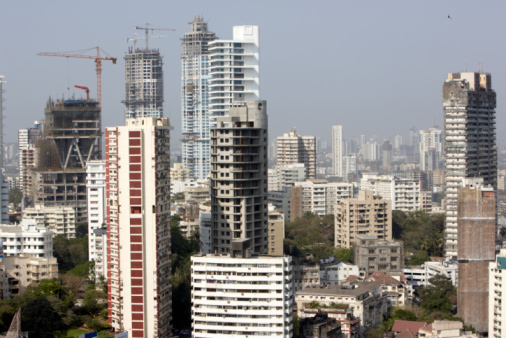
India’s burgeoning economy attained another major milestone on Wednesday, as the South Asian nation surpassed both China and the U.S. to become the top global destination for foreign direct investment (FDI) in greenfield projects.
Data compiled by fDi Markets, a service of the Financial Times newspaper, showed that India attracted $3 billion more than China and $4 billion more than the U.S. for greenfield projects (projects that involve overseas firms building new production facilities in a country as opposed to buying or renting existing facilities) during the first half of 2015.
The total greenfield FDI India garnered by the end of June this year was $30 billion, according to the FT data, more than double the $12 billion it attracted during the same period in 2014 and catapulting the South Asian nation to the top spot from its fifth rank — behind China, the U.S., the U.K. and Mexico — last year.
The ranking continues India’s economic resurgence under Prime Minister Narendra Modi’s government, which came to power in 2014 — a year that the country saw a 47% increase in FDI projects — and 2015 looks on course to be even better.
Another report released on the same day by the World Economic Forum also saw India surge up the global rankings for competitiveness, going from 71st last year to 55th out of 144 countries. The report says India’s bump in the rankings, calculated using a number of economic factors, is largely due to the government’s “pro-business, pro-growth and anti-corruption stance.”
Modi, for his part, has aggressively courted foreign governments and multinational corporations alike, and recently returned from a trip to the U.S. where he met a laundry list of top American corporate heads — including Facebook’s Mark Zuckerberg, Apple CEO Tim Cook, Tesla Motors and SpaceX head Elon Musk, Microsoft chief executive Satya Nadella and Google’s incoming CEO Sundar Pichai (both Nadella and Pichai are Indian) — to push his growth initiatives like “Digital India” and “Make in India.”
Whether the Indian government can sustain the global optimism that has allowed it to avoid the downward market trend most other countries are experiencing, remains to be seen; Modi is still battling at home to pass key reforms to cut business red tape.
Indian Finance Minister Arun Jaitley said in a tweet that it was “satisfying” that the governments efforts were paying off, while Reserve Bank of India governor Raghuram Rajan — who recently enacted a significant cut in the country’s interest rates — said in an interview with news channel NDTV that Modi is an “articulate spokesperson for India” but his successful foreign trips need to be substantiated by concrete reforms.
“The really big constraint is the parliamentary blocks that we’ve seen, there’s been very little progress on policies to ease land acquisition laws and to ease the very rigid labor market as well,” Shilan Shah, a Singapore-based India economist from research consultancy Capital Economics, tells TIME.
While Shah says the new ranking is “a positive reflection on the government’s policies to promote FDI,” he points out that several key state elections over the next year, starting with the eastern state of Bihar that goes to the polls next month, have made the Modi government exceedingly cautious when it comes to economic reform.
“The tactic that the BJP (Modi’s party) is adopting is to almost sit back and not try to push through any big reforms in the hope that it can secure some state election victories and strengthen its mandate in the upper house of parliament thereafter,” he says, adding that this process will likely take more than a year. “I think for now it’s probably sensible to downplay expectations of really big reforms at the central level.”
He also points out that while the FT report paints India in a justifiably positive light in U.S. dollar terms, India’s FDI as a share of gross domestic product (GDP) is “not particularly high in comparison to most of its market peers.”While Shah concludes that the Indian government will probably be able to sustain its current momentum when it comes to FDI, further increases might not be forthcoming under current circumstances.
“I can’t see why [the impact of the government’s foreign investment-friendly policies] would then reverse,” he says. “What we probably won’t see is a further pickup in FDI until we see more general reforms.”
More Must-Reads from TIME
- L.A. Fires Show Reality of 1.5°C of Warming
- Behind the Scenes of The White Lotus Season Three
- How Trump 2.0 Is Already Sowing Confusion
- Bad Bunny On Heartbreak and New Album
- How to Get Better at Doing Things Alone
- We’re Lucky to Have Been Alive in the Age of David Lynch
- The Motivational Trick That Makes You Exercise Harder
- Column: All Those Presidential Pardons Give Mercy a Bad Name
Write to Rishi Iyengar at rishi.iyengar@timeasia.com



